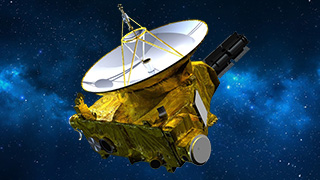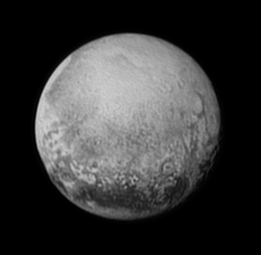Pluto New Horizons: Qorvo Helps Send Images Home to Earth

Three Billion Miles in the Making
After traveling nine years and three billion miles, the New Horizons spacecraft captured the world's first images of Pluto and its moons. With partner Johns Hopkins Applied Physics Laboratory, Qorvo helped equip the New Horizons spacecraft with the critical technology that made it happen.
World's First Images of Pluto, Nine Years After its Launch
This mission marks the first ever visit to the Kuiper Belt, a large zone at least a billion miles beyond Neptune, which contains small, icy orbiting objects. There, the New Horizons spacecraft collected the world's most detailed data and imagery of Pluto and its moons, and sent it back to Earth for assessment.
Notably, Qorvo's components helped the New Horizons transfer pictures and data back to Earth — the same photographs that became the world's first high-resolution images of Pluto.
"The success of this voyage shows how Qorvo technology withstands the harshest of environments, space, where reliability over several years was paramount," said Roger Hall, General Manager of Defense and Space Products at Qorvo. "This technology was launched in space and, nine years later, NASA was ready to communicate and it did the job."

Pluto as seen from New Horizons on July 11, 2015
Image Credit: NASA/JHUAPL/SWRI
This journey, launched in 2006, seeks to provide more information about how Pluto and its moons, and this "third zone of our solar system" are characterized versus the larger inner planets made up of rock and gas.
The Technology Aboard New Horizons
For more than 25 years, Qorvo and Johns Hopkins have worked in partnership to teach Applied Physics Laboratory students how to design, simulate and test components in our factories.
Specifically, four of Qorvo's communication system components served aboard the New Horizons:
- A narrowband frequency tripler, designed via a joint partnership between Qorvo and Johns Hopkins Applied Physics Laboratory
- Voltage controlled oscillators (VCOs) in the X-band uplink Doppler tracking
- VCOs in the command receiver
- X-band downlink transmitter
"We've worked with Qorvo and designed technology for both the Mercury and Pluto space exploration missions; it's an exciting time to see this technology come to fruition," said John Penn, engineering for professionals professor at Johns Hopkins. "Through our partnership with Qorvo, Johns Hopkins' graduate students were able to design, simulate and test a frequency tripler; one of those narrowband tripler design variations ended up in the digital receiver for the Pluto mission."
Qorvo's Space Expertise
At Qorvo, we're proud that our space-qualified technology served on the New Horizons and other space explorations like the Curiosity rover on Mars and the Cassini-Huygens spacecraft near Saturn. It speaks to the exceptional talent of our engineers and our commitment to develop the industry's most reliable RF solutions.
With a deep legacy of space product development, Qorvo components offer the rugged dependability needed for the challenging conditions of space and, most importantly, communications back to Earth.
More than 250,000 Qorvo components have launched aboard orbital payloads, such as communications and navigation satellites, including programs which support broadband data, telecommunications and global positioning services.


